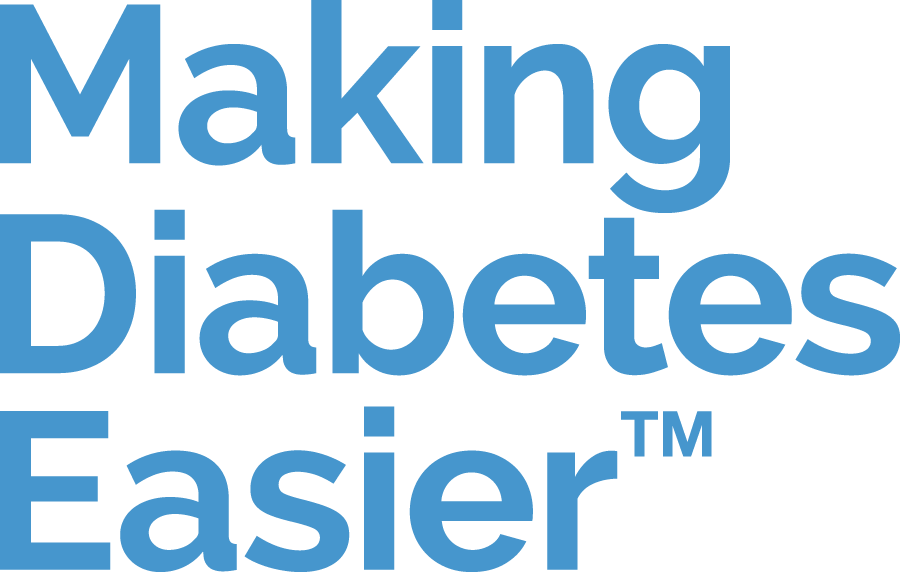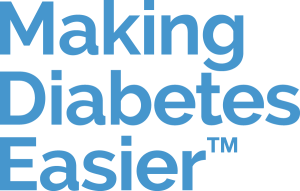Using an insulin pump during pregnancy: a guide

Pregnancy and diabetes: some unique challenges
People with type 1 diabetes may use a variety of technologies to manage their diabetes before, during and after pregnancy. One such diabetes technology is insulin pump therapy.
Having diabetes and being pregnant can mean certain challenges and, increasingly, people are turning to technologies such as insulin pumps to tackle these challenges.
But what do you need to know about using an insulin pump while pregnant? And what are the risks and benefits of insulin pump technology during pregnancy?
In this article, we provide some answers to these questions. We also provide information that can help you decide whether a pump might work for you and recommendations on how to use it before, during, and after pregnancy.
Pregnancy and diabetes: some unique challenges
Blood glucose management during pregnancy can be difficult because of wide variations in insulin requirements due to ongoing hormonal changes.
If you have diabetes and are planning to get pregnant, there are some things you need to be aware of:
-
Blood glucose targets will have a more defined and smaller window of range during pregnancy than outside pregnancy.
-
Hyperglycaemia during pregnancy can pose a risks to the foetus and can raise the risk of birth and neonatal complications; if you do develop high blood glucose, reacting promptly is important.
-
Due to the ongoing hormonal changes in pregnancy, your insulin requirements will fluctuate and vary widely, through pregnancy and after the birth too. For example, in early pregnancy, insulin sensitivity could increase and as the pregnancy progresses, insulin resistance could increase.
-
The risk of hypoglycaemia to the person carrying is higher during pregnancy, particularly in the late first and early second trimester, and after birth. About 10% of people with diabetes visit the hospital at least once during pregnancy due to hypoglycaemia. This is caused by the foetus taking nutrition to grow, which lowers the blood glucose of the person carrying.
-
In pregnancy, there is a higher risk of diabetic ketoacidosis. This is because pregnancy is a ketogenic state (a metabolic state in which your blood has a high concentration of ketones).
-
Nausea, vomiting, and a lack of appetite can make pregnancy more challenging for a person with type 1 diabetes.
The goal of insulin therapy during pregnancy is to achieve blood glucose profiles similar to those of a pregnant person without diabetes, which can help reduce some of the risks mentioned above.
About insulin pumps
An insulin pump is a small, digital device that continuously delivers rapid-acting insulin to the body.
The insulin is typically delivered through a small catheter inserted into the subcutaneous tissue and secured in place on the skin with adhesive. The place where the catheter is inserted under the skin is called an infusion set or an infusion cannula.
In a lot of pumps, the infusion set is connected to the pump — which contains a reservoir of insulin — by plastic tubing. They also have an interface that allows you to instruct the device and input the settings you need.
Some pumps, referred to as ‘patch pumps’, don’t use tubing and instead stick directly to the skin. These pumps deliver insulin through the infusion set and are programmed from a remote, handheld device using wireless technology.
Insulin pumps are also called continuous subcutaneous insulin infusions (CSII).
In general, if you use an insulin pump, the infusion site should be rotated every 24–48 hours to help reduce the risk of skin infections, lipohypertrophy and problems absorbing the insulin.
Can you have an insulin pump while pregnant?
Yes, you can. The use of an insulin pump is becoming more common in pregnancy because it more closely mimics the insulin delivery of a functioning pancreas.
Multiple guidelines have also recommended the use of an insulin pump in pregnancy to manage blood glucose levels.
Several diabetes associations and governmental bodies support the use of insulin pumps during pregnancy too.
Benefits & risks of insulin pump use in pregnancy
High-quality trial data on insulin pump therapy in pregnancy is limited. However, the studies suggest that insulin pumps have the following benefits and risks.
Benefits of insulin pumps
Below are some of the advantages and benefits of insulin pump therapy in pregnancy:
-
Improvement in HbA1c
-
Reduction in hypoglycaemic episodes
-
Reduction in blood glucose fluctuations
-
Reduction in total daily insulin dose
-
Improvement in quality of life (QOL)
-
Great lifestyle flexibility, particularly in terms of meal schedules and travel
-
Easier treatment of morning sickness
The flexibility in the delivery of insulin by pumps may help you to stick to a more defined blood glucose target despite insulin resistance rising throughout the pregnancy. Pump therapy allows for very fine tuning of insulin doses (up to a tenth of a unit of insulin).
Recent observational studies have found blood glucose levels to be lower with insulin pump therapy compared with multiple daily injection therapy in the first and second trimesters of pregnancy.
Risks and disadvantages of insulin pumps
There are possible risks and disadvantages of insulin pumps, but these can be avoided and lessened with proper pump training and taking the time to understand how your pump works and how it will work together with you and your body.
Some risks include:
-
Risk of infection if the cannula is not changed as recommended
-
Risk of ketoacidosis if insulin delivery is interrupted
-
Improper use of boluses can lead to insulin stacking and low blood glucose
-
Failure of the pump or the user to deliver insulin appropriately can lead to hyperglycaemia or ketoacidosis
Ketoacidosis is a particular threat to the foetus. In the event of a pump malfunction (or in case of illness), sick-day rules must be followed.
How to start pregnancy with a pump
When you become pregnant, your healthcare team should provide you with all the information you need to continue using or to start using insulin pump therapy.
You might consider discussing these points with your team:
-
How to maintain good blood glucose management if you are switching from MDI to a pump
-
How to adjust your insulin pump settings throughout the pregnancy as your requirements change
-
How to change the settings after the baby comes
-
What to do in the event of unexplained hyperglycaemia
It is important to be prepared in case the infusion set or pump fails, to prevent hyperglycaemia and ketoacidosis, which can develop within a short amount of time. You should be prepared with a back-up insulin kit (both long-acting and rapid-acting insulin).
In the first days after starting pump therapy in pregnancy, it is important to monitor blood glucose levels and keep in touch with your healthcare team as much as you can and need to. You should work with your healthcare team to adjust your pump's settings until you find the right balance for you.
Using insulin pump therapy in pregnancy
If you choose to use an insulin pump during pregnancy, you need to be mindful that insulin requirements will vary greatly throughout the pregnancy, and you will have to review your pump settings frequently.
For example, you may need less insulin in the first trimester. However, the requirement is likely to increase from 16–20 weeks onwards.
You will have to adjust bolus insulin accordingly. Bolus insulin requirements will change more than basal insulin during pregnancy depending on what you plan to eat or might fancy eating day to day.
Sick day rules
Generally, the rules of using insulin pump therapy during sick days in pregnancy are the same as outside of pregnancy.
However, as people with diabetes are at higher risk of developing diabetic ketoacidosis (DKA) when they are pregnant this will need to be understood and talked through with your healthcare team to ensure there is a plan in place if this happens.
As always you need to look after yourself, stay as hydrated and nourished as you can and monitor your BG levels as well as your blood ketone levels when you are feeling unwell.
Labour
It is always helpful to talk through your labour and delivery plans with your healthcare team, particularly having time to focus on what this means for your diabetes too. It’s good to understand how your diabetes will need to be managed during this time and whether you need to incorporate anything into your plan.
Insulin pumps can be used during pregnancy, and they have many benefits.
If you choose or have this technology during pregnancy, it will require understanding, attentiveness and care to ensure the best possible health outcomes for you and the baby.
Sources
- Thomas SJ. Crabtree, Anastasios Gazis. Insulin pumps and diabetes technologies in pregnancy: an overview for the obstetrician. Obstetrics, Gynaecology & Reproductive Medicine, Volume 30, Issue 4, 2020, Pages 126-129, ISSN 1751-7214, https://doi.org/10.1016/j.ogrm.2020.02.002. https://www.sciencedirect.com/science/article/pii/S1751721420300154
- Kesavadev J. Insulin pump therapy in pregnancy. J Pak Med Assoc. 2016 Sep;66(9 Suppl 1):S39-44. PMID: 27582150. https://pubmed.ncbi.nlm.nih.gov/27582150/
- The Association of British Clinical Diabetologists (ABCD), BEST PRACTICE GUIDE: Using diabetes technology in pregnancy, Version 2.0, March 2020. https://abcd.care/resource/best-practice-guide-using-diabetes-technology-pregnancy
- Berget, Cari, Laurel H. Messer, and Gregory P. Forlenza. A clinical overview of insulin pump therapy for the management of diabetes: past, present, and future of intensive therapy., Diabetes Spectrum 32.3 (2019): 194-204. https://diabetesjournals.org/spectrum/article/32/3/194/32620/A-Clinical-Overview-of-Insulin-Pump-Therapy-for





